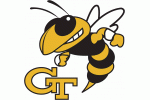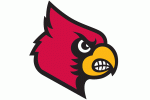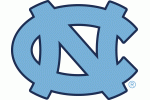Pace. More so than defense or anything you care to name, it's the one thing that's been most synonymous with Virginia basketball ever since Tony Bennett set foot on the JPJ floor. Been quite a saga, too; since national punditry is always much slower to catch on to intelligent things than the populace at large, Virginia fans have been in a constant state of eye-roll for about four years now.
Necessary digression. We are forever past the days when announcers could be taken as serious authorities on anything they announce. Used to be, when Keith Jackson told you something about a player, you probably didn't know it before. You hadn't read about it on the Internet because you had no Internet. Now they can't tell you anything new, because you've seen it all. When TNT highlighted Joe Harris's bedroom wall full of Sharpie-written motivational sayings, I'll bet at least half of Virginia viewers went, well, yeah, ESPN had a thing on that months ago.
The same holds true for smart analysis of the game. National punditry is necessarily broad and only as deep as it has time for. But fans, via the Internet, are exposed to incredible depth of coverage, and all of them get a say if they so choose. And the smartest opinions often bubble to the top and spread among a fanbase, so that when an ESPN writer picks a long list of Wooden Award candidates, probably using the per-game tools he's used to, and the list omits Mike Scott, he gets bombarded by hordes of Virginia fans screaming "Pacist!"
Eventually the pundits start incorporating that into all their analyses. It takes them a while, but they get there. One of those nuggets of Internet wisdom that's made it now into punditry discourse is this: Good teams should play at a fast pace, bad ones should play at a slow pace. This will limit variance much the same way that a seven-game baseball series does a better job than a one-game series of ensuring that the better team advances. Then there will be less chance of the good team being on the wrong end of the Cinderella story.
Unfortunately, that was always a flawed bit of wisdom, yet it's made its way in all the same. The Sporting News jumped all over it; the Wall Street Journal's blind-bracket tool did too.** They both did so in the following form: Virginia plays slowly and is therefore at risk of being upset.
Commence eye-roll. Also destruction of this idea now and forever.
Let's start with this: Despite the fact that Virginia is the only one of the Sweet 16 teams identified as playing slow, there are actually five teams in the remaining 16 that are in the bottom 50 in pace. One of them - is Florida. The near-universal choice as #1 team remaining (and SN's #2). They must be so good that they can overcome all pace-related difficulties. The other three are Tennessee, Baylor, and Michigan, none of whom got dinged for playing slowly and all of whom SN ranked above Virginia. Michigan plays a meager 1.3 possessions faster than Virginia and with much worse defense. If we were to play Michigan, at Michigan's pace, each team would get one extra possession during the game. Makes all the difference, eh?
You would really have to play at a VMI superpace to make pace count for you. Let's take some ludicrously extreme comparisons. Let's take two good teams, each of whom score 1.2 points per possessions and hold their opponents to 0.8. A team that can do that isn't just good, it's elite and totally ruins its competition. When the Hoos obliterated Navy, 67-42, and Notre Dame, 70-49, that 0.4 margin was pretty much exactly the result in those games.
Now let's say one of our two elite teams plays a 60-possession game and one plays at 75, which just about represents both tail ends of the real-life bell curve. Each of our elite teams gets a 0.2 point advantage for every offensive possession and the same for each defensive possession. Under KenPom terms a 60-possession game is actually a 120-possession game, 60 each of offense and defense, so a little math tells us our slow-paced machine will finish the game with a 24-point lead and our fast-paced dynamo will have a 30-point lead.
Six points. I just had one team plod around like a brontosaurus and the other one race like maniacs, every bit as fast as the fastest team in the country, and I made both teams absurdly and ludicrously better than their opponent and all I could squeeze out of the difference was six points.
Now, does anyone really think that the much narrower and more realistic differences between tournament teams, and barely-noticeable pace differences, will create a situation in which only one team of 16 is subject to losing because of their pace?
Suppose we beat MSU and play 7th-seeded UConn - that would be a game, I think, where, if we lost, it would be considered quite the upset. Let's go through the same exercise as above. According to KenPom, if we played an average team on a neutral court we would score (roughly) 1.15 points per possession and allow 0.9 on defense. The margin, then, is 0.25 points per possession. And let's pretend UConn is that average team. If we played the game at our pace, we would outscore this average UConn team by 15.25 points. But say we bowed to the wisdom of the pundits and sped up to play at UConn's pace of 65.2 (call it 65) possessions - not especially fast, but obviously not slow enough not to attract the attention of Sporting News, or anyone else for that matter. We would outscore them by 16.25. One point. Speeding up is worth one point. But to Sporting News, that makes all the difference between being at risk of getting upset and being good to go! (And UConn is not, of course, an average team, so that points-per-possession margin should be much smaller.)
Noting that, in fact, exactly half the remaining 16 teams are in the bottom 100 for pace, we can finish demolishing the Sporting News foolishness by pointing out that all these slow-ass teams are playing each other, which to anyone but the most thoroughly idiotic observer would note is something that nullifies any pace-related concerns entirely. (And the cherry on top of the demolition: going by the fact that Sparty is the 3rd-best team in their calculus and we're 11th, we should be slowing the game down according to the very theory they use to discount our chances in the first place.)
We're not done here, though; a final few words with the intent of putting to bed the whole theory of "good, fast; bad, slow" in the first place. It is of course predicated on the assumption that no matter when in the shot clock you shoot, you have the exact same chance of coming away with a basket. Tony Bennett knows better, obviously. If you're a good team playing a bad team, the longer you make that bad team defend, the more likely they are to make a mistake. Hell, this is true for just about anyone.
We can use the same theory of probability in a slightly different fashion. Let's say the shot clock was only five seconds long. Would you get a good shot? Of course not - you'd get a heave at best. If it was 10 seconds, you'd have it a little better, but you still wouldn't do very well most of the time. 15 seconds gives you a fighting chance. 20 seconds lets you actually run an offense. All of these increases improve the chance of scoring, so it naturally follows that you can't artificially speed up the game and expect to have the same chances at any time in the possession. Eventually that would run to an asymptote, of course, and you wouldn't materially improve your odds, but that point comes somewhere well after the 19.8 seconds that an average Virginia offensive possession lasts.
At the normal pace of media osmosis, if we can get these ideas disseminated to the punditry, they'll be the conventional wisdom by which London Perrantes's senior year is analyzed.
**I can't hate on the blind bracket tool too much. I used it and it told me I should pick North Dakota State and Harvard. I would never have done that, certainly not with ND State and maybe not with Harvard either. But I went with it and lo and behold.



















